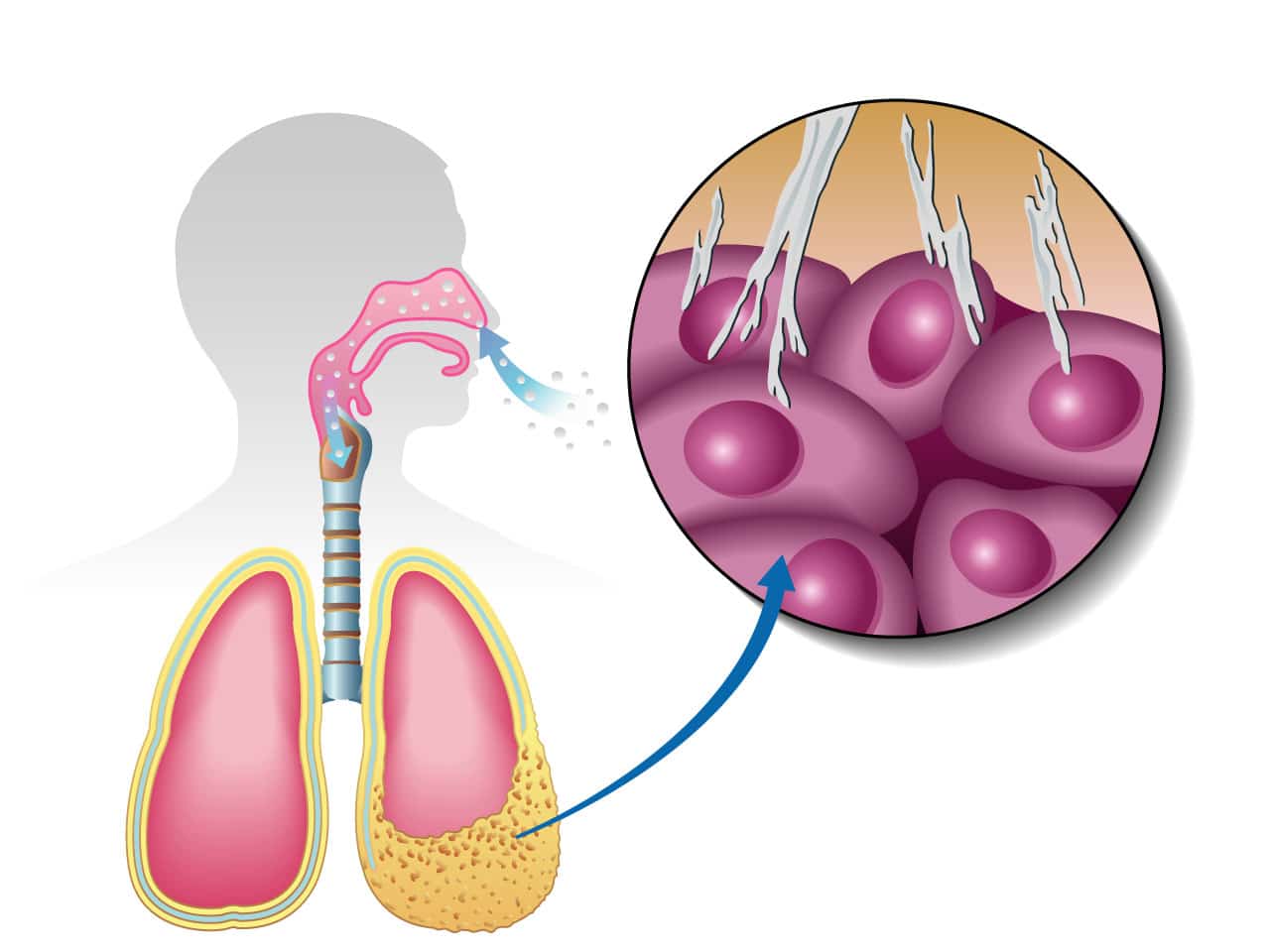Malignant pleural mesothelioma (MPM) is a rare and aggressive type of cancer that affects the lining of the lungs. It is caused by exposure to asbestos, a mineral fiber that was once widely used in construction and other industries. MPM is difficult to diagnose and treat, and the prognosis is often poor. However, there are a number of treatment options available that can help to improve the quality of life and extend the life of patients.
Surgery

Surgery is the primary treatment for MPM, and it is often the only chance for a cure. The goal of surgery is to remove as much of the cancer as possible. However, surgery can be complex and risky, and it is not always possible to remove all of the cancer. There are two main types of surgery for MPM:
Pleurectomy/decortication
This involves removing the lining of the lungs (pleura) and the underlying lung tissue. This type of surgery is recommended for patients with early-stage MPM who have good overall health and can tolerate the procedure. In some cases, this surgery may also be performed as a palliative treatment to relieve symptoms such as chest pain and difficulty breathing.
A study published in the Journal of Thoracic Disease showed that pleurectomy/decortication had a median survival rate of 23 months for patients with stage I and II MPM. This is compared to a median survival rate of only 6 to 12 months for patients who did not undergo surgery.
Risks and Complications of Pleurectomy/decortication
While this surgery has shown promising results, it is important to note that it is a major operation that carries a risk of serious complications. Some potential risks include infections, bleeding, and damage to surrounding organs. Recovery time can also be lengthy, and patients may experience pain and discomfort for several weeks.
Extrapleural pneumonectomy
This involves removing the lining of the lungs, the lung, and the surrounding chest wall. This surgery is more invasive and carries a higher risk than pleurectomy/decortication, but it may be recommended for patients with advanced MPM or those who have already undergone other treatments without success. Studies have shown that this surgery can significantly improve survival rates for selected patients.
Risks and Complications of Extrapleural Pneumonectomy
Due to the extensive nature of this surgery, it comes with a higher risk of complications compared to pleurectomy/decortication. Some potential risks include bleeding, infections, and damage to surrounding organs such as the heart and diaphragm. Recovery time can also be longer, and patients may require rehabilitation to improve their breathing and overall physical function.
Radiation Therapy
Radiation therapy uses high-energy X-rays or other types of radiation to kill cancer cells. It can be used in various ways to treat MPM:
As a primary treatment
In some cases, radiation therapy may be used as the main treatment for MPM, either alone or in combination with surgery. This is typically recommended for patients who are not eligible for surgery or have a high risk of complications from surgery. A study published in the Journal of Thoracic Oncology showed that the combination of radiation therapy and chemotherapy had a median survival rate of 17 months for patients with unresectable MPM.
After surgery
Radiation therapy may also be used after surgery to kill any remaining cancer cells and reduce the risk of the cancer recurring. This is known as adjuvant therapy and can help to improve the chances of long-term survival. A study published in the Annals of Surgical Oncology showed that patients who received adjuvant radiation therapy after surgery had a median survival rate of 18 months, compared to only 7 months for those who did not receive radiation therapy.
As a palliative treatment
For patients with advanced MPM, radiation therapy can also be used as a palliative treatment to relieve symptoms such as chest pain and difficulty breathing. It can help to shrink tumors and reduce pressure on the lungs and other organs, improving overall quality of life. A study published in the International Journal of Radiation Oncology Biology Physics showed that radiation therapy provided significant pain relief for 74% of patients with MPM.
Risks and Complications of Radiation Therapy
While radiation therapy is generally safe and well-tolerated, it can also cause side effects such as fatigue, skin irritation, and nausea. These side effects are usually temporary and can be managed with medication and other supportive care.
Chemotherapy

Chemotherapy involves using drugs to kill cancer cells and is often used in combination with surgery or radiation therapy for MPM. It can also be used as a primary treatment for patients who are not eligible for surgery. The most commonly used chemotherapy drug for MPM is cisplatin in combination with pemetrexed.
A study published in the New England Journal of Medicine showed that this combination of chemotherapy had a median survival rate of 12.1 months for patients with advanced MPM, compared to only 9.3 months for those who received cisplatin alone.
Risks and Complications of Chemotherapy
Chemotherapy can cause a range of side effects such as nausea, vomiting, hair loss, and fatigue. However, these side effects are usually temporary and can be managed with medication and other supportive care. In some cases, chemotherapy can also damage healthy cells, leading to an increased risk of infections and other complications.
Immunotherapy
Immunotherapy is a relatively new type of treatment that uses the body’s immune system to fight cancer. It works by stimulating the immune system to identify and attack cancer cells. While still in its early stages, there have been some promising results for using immunotherapy to treat MPM.
Checkpoint inhibitors
Checkpoint inhibitors are a type of immunotherapy that helps to block proteins on cancer cells that prevent the immune system from attacking them. A study published in The Lancet Oncology showed that using a combination of checkpoint inhibitors had a response rate of 24% in patients with advanced MPM. This is compared to only a 6% response rate for patients who received chemotherapy alone.
Mesothelin-targeted therapy
Mesothelin is a protein found on the surface of MPM cells, making it a potential target for treatment. A study published in Clinical Cancer Research showed that using a mesothelin-targeted therapy had a response rate of 76% in patients with advanced MPM. This type of therapy is still in its early stages, but it shows promise for improving outcomes for patients with MPM.
Risks and Complications of Immunotherapy
As with any type of treatment, there are potential side effects associated with immunotherapy. These can include fatigue, skin reactions, and inflammation of organs such as the lungs or liver. However, these side effects tend to be less severe than those associated with chemotherapy, and they can often be managed with medication.
Multimodal Therapy
Multimodal therapy involves using a combination of different treatments to achieve the best possible outcome for patients with MPM. This may include a combination of surgery, radiation therapy, chemotherapy, and/or immunotherapy. Studies have shown that multimodal therapy can significantly improve survival rates and quality of life for patients with MPM.
A study published in the Annals of Surgical Oncology showed that patients who received multimodal therapy had a median survival rate of 20 months, compared to only 13 months for those who received single-modality treatment.
Risks and Complications of Multimodal Therapy
The main risk associated with multimodal therapy is the potential for increased side effects from combining different treatments. This can include fatigue, nausea, and increased risk of infections. Additionally, it may not be suitable for all patients, particularly those who are not healthy enough to tolerate multiple treatments.
Clinical Trials
As MPM is a rare and difficult-to-treat cancer, there is ongoing research and development of new treatments through clinical trials. These trials aim to test the safety and effectiveness of new treatments before they are made available to the general public. Participating in a clinical trial can provide patients with access to cutting-edge treatments and potentially improve outcomes. However, it is important to discuss the potential risks and benefits with a doctor before enrolling in a trial.
Ongoing Clinical Trials for MPM
- The Mesothelioma Virtual Tissue Bank (MVTB) is an international collaboration that collects and banks tissue samples from mesothelioma patients to support research and development of new treatments.
- A Phase II trial is currently underway to assess the effectiveness of immunotherapy combined with chemotherapy for advanced MPM.
- Another Phase II trial is studying the use of a novel type of radiation therapy, known as intensity-modulated pleural radiation therapy (IMPRINT), for patients with MPM who have undergone surgery.
Conclusion
Malignant pleural mesothelioma is a challenging type of cancer to treat, and the prognosis is often poor. However, with the advancements in medical technology and ongoing research, there are various treatment options available that can help to improve the quality of life and extend the life of patients with MPM. Surgery, radiation therapy, chemotherapy, immunotherapy, and multimodal therapy are all viable treatment options that can be tailored to each individual patient’s needs. It is essential for patients to work closely with their healthcare team to determine the best course of treatment and to explore the possibility of participating in clinical trials. With early detection and a comprehensive treatment plan, there is hope for improving outcomes for those diagnosed with MPM.
wfriv.xyz